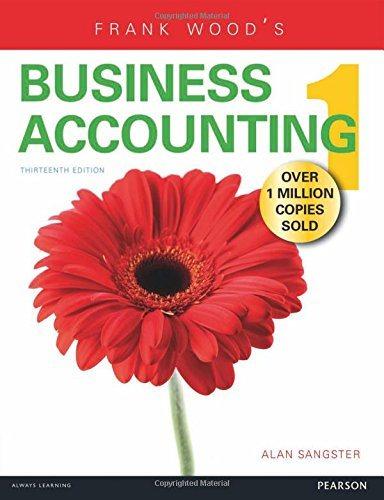Question
Putnam & Putnam, a legal firm, uses the balance sheet approach to estimate uncollectible accounts expense. At year-end, an aging of the accounts receivable produced
Putnam & Putnam, a legal firm, uses the balance sheet approach to estimate uncollectible accounts expense. At year-end, an aging of the accounts receivable produced the following five groupings:
| a. Not yet due | $ 300,000 |
|---|---|
| b. 1 to 30 days past due | 126,000 |
| c. 31 to 60 days past due | 48,000 |
| d. 61 to 90 days past due | 9,000 |
| e. Over 90 days past due | 18,000 |
| Total | $ 501,000 |
On the basis of past experience, the company estimated the percentages probably uncollectible for the five age groups to be as follows: Group a, 1 percent; Group b, 3 percent; Group c, 10 percent; Group d, 20 percent; and Group e, 50 percent.
The Allowance for Doubtful Accounts before adjustment at December 31 showed a credit balance of $7,080.
Required:
Compute the estimated amount of uncollectible accounts based on the given classification by age groups.
Prepare the adjusting entry needed to bring the Allowance for Doubtful Accounts to the proper amount.
Assume that on January 10 of the following year, Putnam & Putnam learned that an account receivable that had originated on September 1 in the amount of $5,160 was worthless because of the bankruptcy of the client, Safeland Company. Prepare the journal entry required on January 10 to to write off this account.
Step by Step Solution
There are 3 Steps involved in it
Step: 1

Get Instant Access to Expert-Tailored Solutions
See step-by-step solutions with expert insights and AI powered tools for academic success
Step: 2

Step: 3

Ace Your Homework with AI
Get the answers you need in no time with our AI-driven, step-by-step assistance
Get Started


